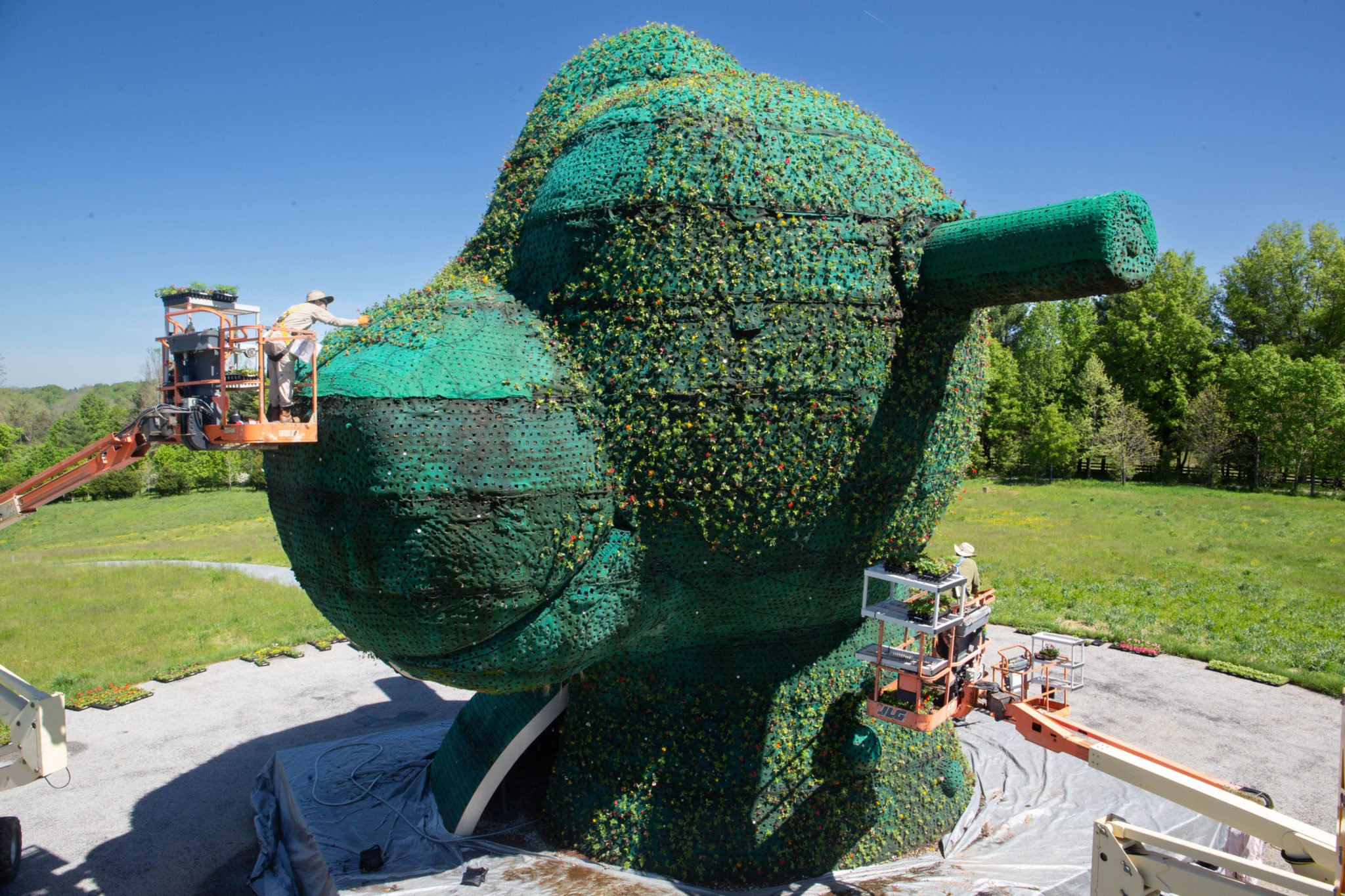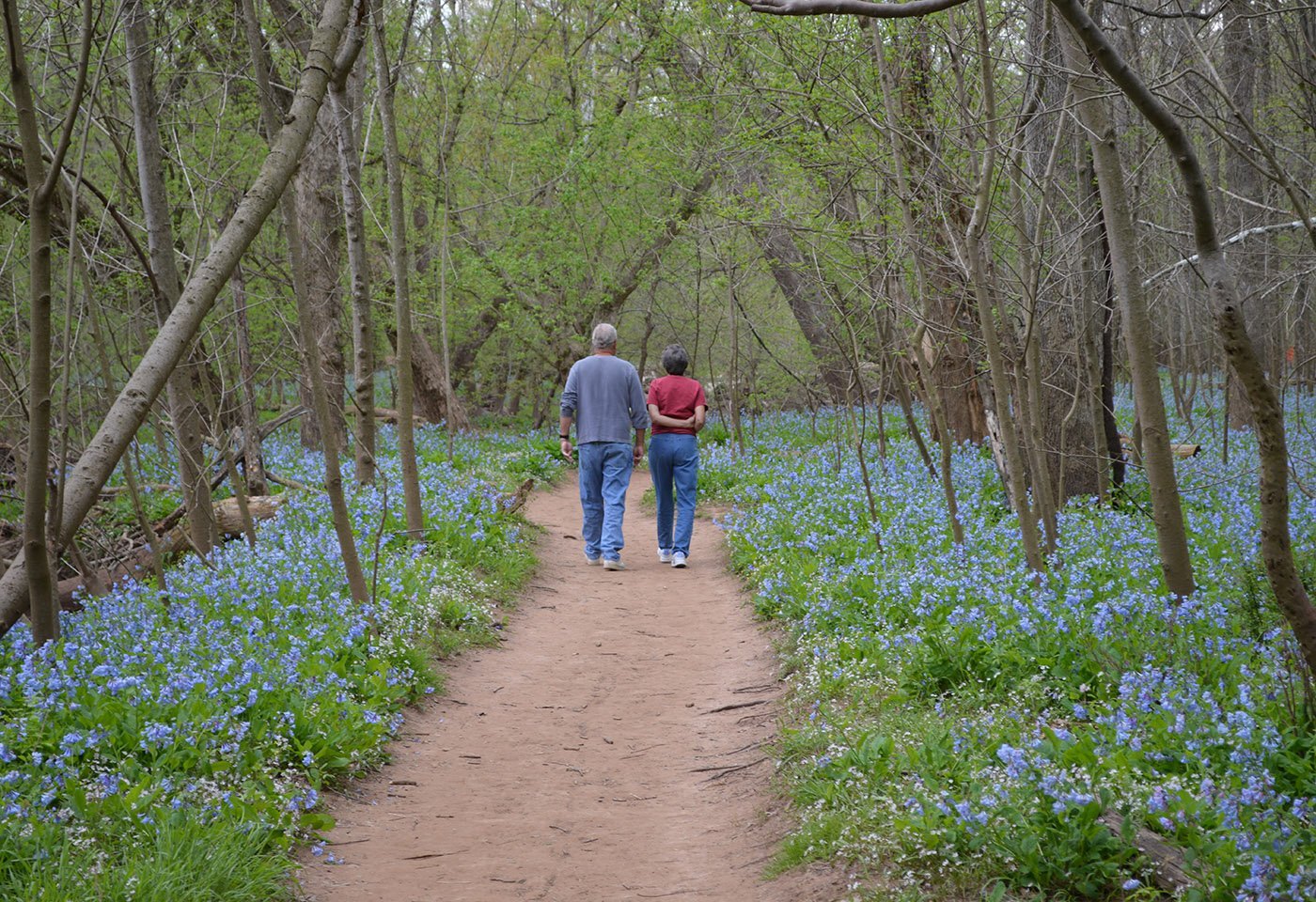Visitors to the Glenstone museum in Potomac marvel at Jeff Koons’s famous “Split-Rocker,” a massive sculpture filled with flowers. But how many stop to wonder about the gardening work required to keep it so colorful? We asked Chris Ryan—the guy who has tended the foliage for the last nine years—to explain what’s involved.
The Sculpture
When Koons created “Split-Rocker” in 2000, he specified which flowers and hues he preferred, and a group of annuals that bloom for just a single growing season are chosen each year to replicate Koons’s original selection. “Split-Rocker” is divided into numbered zones so that the sculpture’s eyes go in the right spot and Koons’s desired color palette can be maintained year after year. It’s also equipped with a computer-controlled internal-drip irrigation system that can track whether each zone needs more or less water.
The Technician
Ryan, who has a master’s degree in plant science, is tasked with year-round maintenance of the artwork. Most days, he goes up in a cherry picker to inspect and tend to it. During the summer, “Split-Rocker” requires daily fertilizing, manicuring, and pest management. As with all of Glenstone’s 300 acres of landscaping, its care is entirely organic.
The Replanting
“Split-Rocker” typically blooms from mid-May to mid-October, and Ryan’s team does its planting over about three days during the first or second week of May. It takes at least 24,000 plants to fill the sculpture; they come in trays of 72 and are from a nursery in northern Maryland. The various varieties (including petunias, marigolds, and zinnias) are assigned to the appropriate section of the sculpture—essentially a floral version of paint by numbers.
The Result
In full flower, the sculpture is quite a sight—a favorite of both art lovers and Instagrammers. But its annual death is as important, in a way, as its colorful life—a vivid reminder of transience and mortality. The plants meet their end as winter approaches, and then the process begins anew. Ryan starts by pulling up all the seedlings. Then he’ll work on soil replenishment and repairs to the structure, among other tasks. That’s the cycle of the sculpture, and—if you want to get a bit corny about it—of life: another year, a new planting, a fresh bloom.
This article appears in the June 2022 issue of Washingtonian.

















